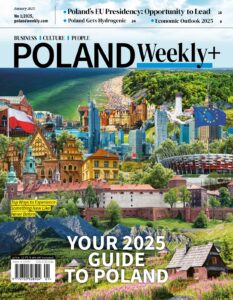Hybrid working increasing in popularity
Cushman & Wakefield has published the results of its second occupier survey in its report “What’s the future of the office?”
The events of the past two years have caused profound social, political and economic changes. Real estate, including the office sector, continues to feel the consequences of the shifting landscape. Companies are reorganizing their offices and implementing new workplace models. A survey of office tenants carried out by global real estate services firm Cushman & Wakefield has revealed that three out of five occupiers will ultimately embrace hybrid working, which represents a 14% increase on last year. Below are other key findings of the report.

Hybrid working more popular than a year ago
59% of the surveyed employers said they had already implemented or would implement the hybrid workplace model, which represents an uplift of 14% on the June 2021 survey. The most popular hybrid model foresees full flexibility and the employee choosing when to work in the office and when to work from home – this model was favored by 30% of employers, up by 3 pp on last year.
The traditional workplace model was indicated as the targeted policy by close to 27% of the survey’s respondents, three quarters of whom would permit remote working in exceptional circumstances. No-one opted for 100% remote work. 14% of all the respondents have not decided which model to embrace, down by 16 pp on the June 2021 survey.

The pandemic is reshaping offices
Over 10% of the survey respondents have made changes to the ways office space is used during the pandemic and 24% are planning to reconfigure offices in the next 12 months. Almost a quarter have not made any decision regarding this matter, down 6 pp on the June 2021 survey, while 32% said they would make no change to how the office was used.

“Over 30% of the respondents have not made any decision about changing the way they use office space, which is likely to be due to the phase of their lease term or the lack of fit-out or upgrade contributions routinely provided by landlords in the past. Tenants’ investment plans are also likely to be hampered by office fit-out costs which have remained on a strong upward trajectory since the beginning of 2022,” says Jan Szulborski, Senior Consultant, Research & Consulting, Cushman & Wakefield.
Apps for booking desks, meeting rooms and parking spaces are commonplace tools for planning in-office work – they have been rolled out by 43% of respondents.
Cushman & Wakefield’s survey has also highlighted that over 40% of its respondents have increased the number of small rooms or pods for meetings and video calls. Other office amenities sought after by tenants included a restaurant/canteen, a cash dispenser and cycling facilities which were important to 67%, 43% and 40% of the surveyed employers, respectively.
How are employers trying to bring more workers back into the office?
According to employers, employee attitudes towards going back into the office have deteriorated over the last year, the survey reveals. Almost a half of last year’s survey respondents said their employees felt positive about returning to the office. The 2022 survey has shown an 11 pp decrease in “positive” and “rather positive” attitudes towards heading back into the office.

“Everything that we do every day has a huge impact on creating the experience for both our employees and clients. Awareness and determination are key to building the workplace of the future – one that fosters experience sharing, strengthens a sense of belonging, provides space for sustainable achievement of objectives and growth while reflecting the corporate culture and values,” adds Anna Trochim, Head of Human Resources Poland, Cushman & Wakefield.
The survey revealed that a quarter of the respondents have implemented solutions to improve employee wellbeing. 59% have made offices greener. 28% have provided massage recliner chairs in their offices, 23% offer massages and more ergonomic furniture. Almost a quarter, 23%, have improved acoustics while 18% indoor air quality.
The survey was conducted using the CAWI method in June 2022 on a sample of 103 decision-makers in office space management (CEOs, Heads of Administration, Chief Operating Officers and Office Managers).







